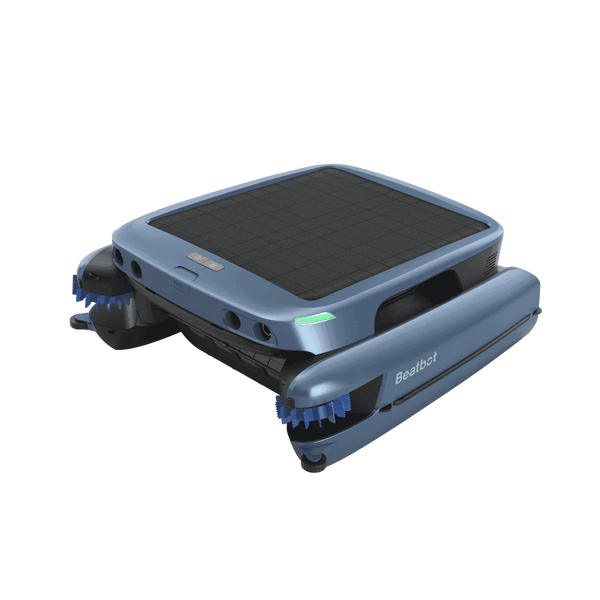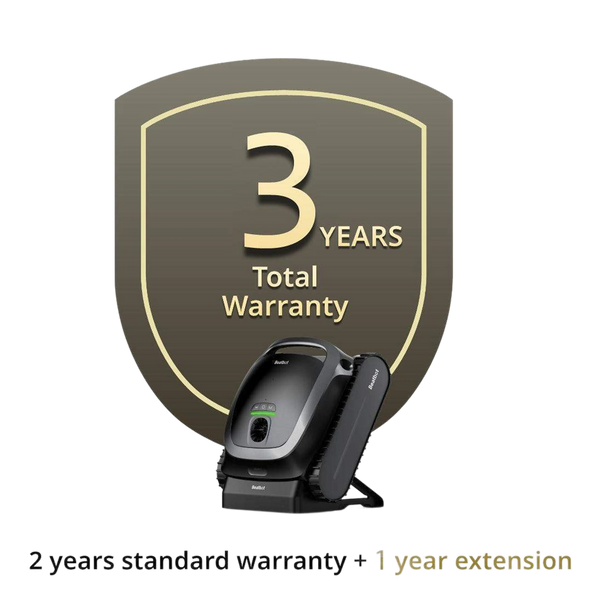Should I Backwash the Pool Before Vacuuming?
Your cleaning device plays a crucial role in maintaining the cleanliness and clarity of your pool water, yet it cannot function optimally without some assistance from you. Over time, algae, dirt, and other contaminants tend to accumulate on the sides, steps, and bottom of the pool, creating an unsightly and potentially unhealthy environment. To ensure that your pool remains inviting and safe for swimming, it is essential to engage in regular pool maintenance, which includes brushing and vacuuming. But when it comes to vacuuming, there is a decision to be made: should you backwash the pool ?Absolutely, it is imperative to perform a backwash on your pool prior to vacuuming, as this crucial step is essential for maintaining a clean and hygienic swimming environment. This article delves into the reasons behind this practice and outlines the appropriate steps to follow for effective backwashing.
Table of content

What’s Exactly "Backwash"?
"Backwash" refers to the process of reversing the flow of water through a pool's filtration system to clean and flush out impurities that have accumulated within the filter media, which is crucial for maintaining the cleanliness and efficiency of the pool's filtration system. During the backwash process, water is forced to flow in the opposite direction through the filter media. This reverses the normal flow of water and dislodges the trapped impurities, which are then flushed out of the system.
The backwash water, containing the impurities, is usually directed to the pool's drain or waste line, rather than being returned to the pool.The main purpose of backwashing a pool is to clean the filter media, which traps dirt, debris, algae, and other impurities that are removed from the pool water during the filtration process. Regular backwashing is essential for maintaining the health and cleanliness of a swimming pool.
It helps to prevent the build-up of harmful bacteria, algae, and other contaminants, which can pose a risk to swimmers' health. Additionally, a clean and efficient filter system can help to reduce the need for frequent chemical treatments, saving time and money.
Why is It Necessary to Backwash Your Pool Before Vacuuming?
The answer lies in the efficiency and effectiveness of your pool's filtration system. When you vacuum your pool, the debris and dirt you remove are directed to be sent to the filter system. However, if the filter is clogged with dirt and debris, it will not be able to perform its function optimally. This can result in the accumulation of dirt and debris in your pool, making it unsuitable for swimming. To avoid this, it is crucial to backwash your pool before vacuuming to ensure that your filter is clean and operating correctly. By doing so, you can maintain a healthy and clean swimming environment for your pool.
Additional Situations Requiring Pool Backwashing
For pool owners, regular maintenance is key to ensuring crystal-clear water and efficient operation of your pool system. One essential maintenance task is backwashing. While filters typically have a set backwashing schedule based on their type, certain situations may call for additional attention.
Unexpected Heavy Storms
After a major storm, your pool could accumulate debris and contaminants that overwhelm the filter system. This is an ideal time to backwash and ensure your filter is ready to handle the increased load.
Algae Outbreaks
If an algae bloom occurs, it’s crucial to backwash your filter after treatments to remove any residual algae and prevent regrowth.
Nearby Deciduous Trees
Pools surrounded by deciduous trees often gather leaves that can clog a filter easily. Consider backwashing your system after significant leaf fall to maintain effective filtration.
Regular engagement in these situations will optimize your pool's performance and keep your water pristine.
When to Steer Clear of Backwashing Your Pool's Filter System
Backwashing is typically an effective method for cleaning out clogged pool filters. However, there are certain situations where it might be better to skip this process. Here's when you should consider alternatives:
Presence of Algae : If your pool is battling an algae problem, bypass the filter altogether and opt for vacuuming directly to waste. Algae can slip through the filter and re-enter the pool, perpetuating the issue.
Excessive Debris and Dirt : In instances where your pool has accumulated a significant amount of debris or dirt—perhaps due to nearby construction or roadworks—it's advised to vacuum directly to waste. This approach prevents overloading your filter with large particles, ensuring a more thorough cleaning.
By understanding these scenarios, you can maintain a more efficient and clean pool system without the risk of recontaminating the water.
Step-by-Step Guidelines to Backwash Your Pool:
Preparation
- Turn Off the Pool Pump: Before you begin, make sure to turn off the pool pump to avoid any potential damage or injury.
- Gather Supplies: You may need a garden hose, a bucket, and possibly some pool chemicals for later use.
Setting Up for Backwashing
- Locate the Backwash Valve: On your pool filter system, find the valve that controls the flow of water. This is typically labeled with settings such as "Filter," "Backwash," "Rinse," and "Waste."
- Set the Valve to Backwash: Turn the valve to the "Backwash" setting. This will reverse the flow of water through the filter, sending it out through a hose connected to the pump.
Backwashing the Pool
- Turn On the Pump: With the valve set to "Backwash," turn on the pool pump. The water will now flow backward through the filter, pushing out the trapped debris and dirt.
- Monitor the Process: Watch the water flowing out of the hose. You should see particles and debris being carried away. This process can take a few minutes, depending on the level of contamination in your filter.
- Turn Off the Pump: Once the water flowing out of the hose appears clear, turn off the pool pump.
Rinsing the Filter
- Set the Valve to Rinse: Turn the valve to the "Rinse" setting. This will send clean water through the filter to wash away any remaining particles and to settle the filter media (such as silica sand) back to the bottom.
- Turn On the Pump Again: With the valve set to "Rinse," turn on the pool pump for about 30 to 45 seconds.
- Turn Off the Pump: After rinsing, turn off the pool pump.
Returning to Normal Operation
- Set the Valve to Filter: Turn the valve back to the "Filter" setting. This will restore the normal flow of water through the filter.
- Turn On the Pump: With the valve set to "Filter," turn on the pool pump to resume normal filtration.
After successfully completing the backwashing procedure, you are now ready to vacuum your pool. It's important to monitor the filter pressure gauge closely and regularly empty the skimmer basket of any debris that accumulates during the vacuuming process.

Proper Procedure for Backwashing a DE Filter
Backwashing a DE filter is crucial to maintain your pool’s cleanliness and efficiency. Follow this step-by-step guide to ensure you're doing it correctly:
Turn Off the Pool Pump
Start by ensuring the pool's pump and filtration system are completely off. This is essential for safety and to prevent damage.Adjust the Filter Setting
Locate the filter valve and set it to the "BACKWASH" position. Make sure the handle is securely locked to prevent leaks. Once set, switch the pump back on. You should observe water flowing through the sight glass, indicating that the backwashing process has begun.Monitor the Water Clarity
Allow the water to run through the system until the sight glass shows clear water, signaling that impurities have been flushed out.Alternate Between Backwash and Rinse
To ensure thorough cleaning, alternate between the backwash and rinse settings a couple of times. Always remember to switch off the pump each time before changing the valve setting to prevent any potential damage.Dispose of the DE Properly
Collect and discard the DE (Diatomaceous Earth) in the trash as it is no longer effective after backwashing. Ensure you're following local regulations for DE disposal.Disassemble the Filter
With the pump still off, carefully disassemble the filter. You may need to adjust timer settings to facilitate this step. This allows for any additional cleaning and inspection of internal components.Drain the Filter
Open the release valve to start draining the filter. For a more thorough removal of water, remove the drain plug located at the bottom of the filter tank. This ensures all water exits the system efficiently.
Following these steps will help maintain your filter's performance and extend its lifespan, keeping your pool sparkling clean.
Additional Tips
-
Regular Maintenance: Backwashing should be part of your regular pool maintenance routine. How often you need to backwash depends on factors such as pool usage, debris levels, and filter type.
To elaborate, the frequency of backwashing largely hinges on how much use your pool gets and the surrounding environment. If your pool is bordered by shrubs or trees, it might require more frequent backwashing due to leaf litter and organic debris.
General Guidelines : Typically, backwashing once a week or aligning it with your scheduled maintenance is recommended. Keep an eye on your filter's pressure gauge—backwashing is advised when it shows 8-10 PSI over the initial "clean" pressure. For instance, if your filter usually operates at 15 PSI but spikes to 25 PSI, it's time for a backwash.
Special Considerations : After significant weather events like storms or if there's an algae bloom, consider performing an extra backwash. Additionally, if you have deciduous trees nearby, a post-foliage drop backwash might be beneficial.
Monitor Filter Pressure: Keep an eye on the filter pressure gauge. A significant increase in pressure can indicate that it's time to backwash.
-
To determine precisely when to perform this task, follow these guidelines:
Weekly Routine : As a general rule, incorporate backwashing into your weekly pool maintenance schedule. This helps maintain optimal filter performance and water clarity.
-
Pressure Increase : Backwashing is recommended when your filter’s pressure gauge shows an increase of 8-10 PSI above the normal or "clean" pressure level.
- Example : If your filter typically operates at 15 PSI, and you notice the pressure has risen to 25 PSI, it's time to backwash. This ensures your pool filter continues to work efficiently and prevents potential damage.
By adhering to these practices, you can ensure your pool remains clean and inviting, while also prolonging the life of your filter.
In summary, backwashing your pool prior to vacuuming is crucial for maintaining a clean and safe swimming environment. By adhering to the correct backwashing procedures, you can guarantee that your pool filter operates efficiently and effectively removes debris and contaminants. Regular pool maintenance, including backwashing and vacuuming, is essential to keep your pool pristine and inviting for swimming.
Relative Blogs
About the author



















